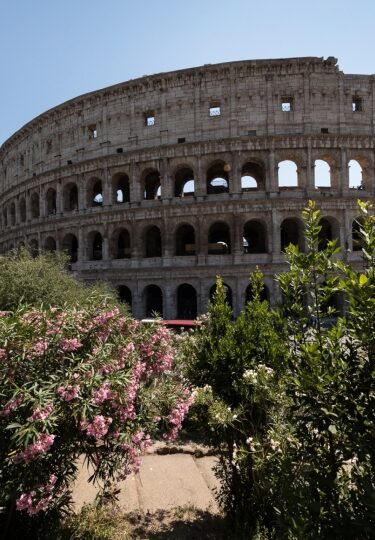The Colosseum, the Leaning Tower of Pisa, the Ponte Vecchio… a list of famous landmarks in Italy is a long one. From Rome to Florence and from Venice to Naples, the country has an embarrassment of riches.
There are scenes of natural beauty that include the Amalfi Coast and Sicily’s Mount Etna, not to mention the 2,000 years of history that have left such wonders as Rome’s Pantheon and Florence’s Duomo.
Ponte Vecchio, Florence
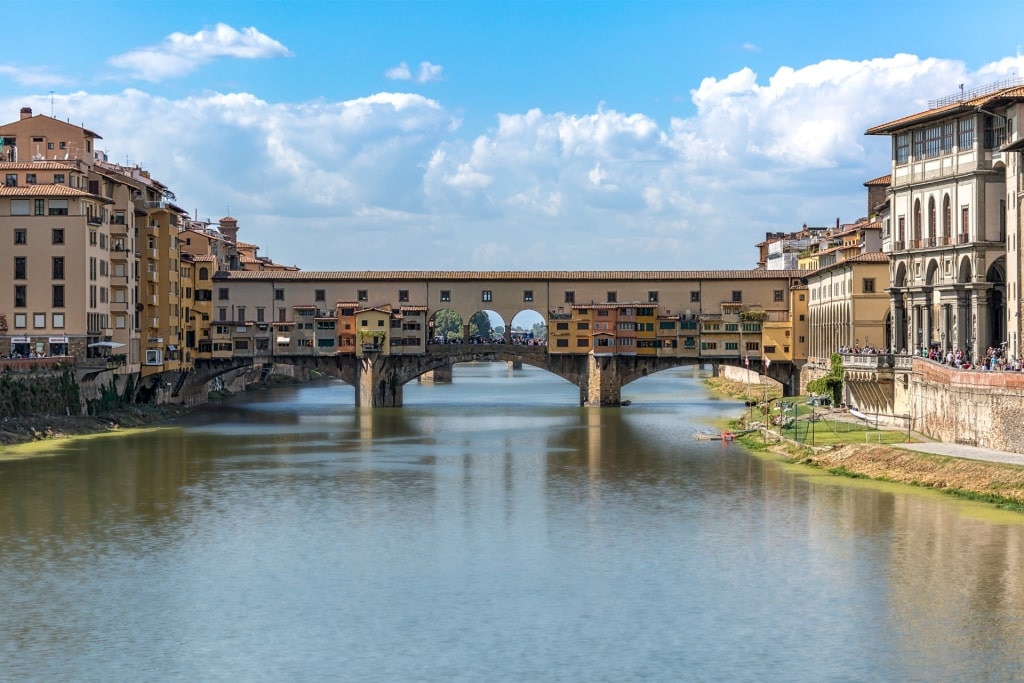
Ponte Vecchio, Florence
The Ponte Vecchio, built in 1333, is the only bridge in Florence to have survived the destruction of World War II. You can find a plaque on the bridge commemorating the heroic German consul who helped save it.
This three-arched medieval Florentine bridge across the Arno River is lined with 48 shops. Originally for the likes of butchers, fishmongers, and tanners, they were later replaced by jewelers and goldsmiths.
Above the shops is part of the Vasari Corridor, built in 1565 for the Medici rulers. The half-mile-long passageway let them move discreetly between the Pitti Palace and Palazzo Vecchio.
Amalfi Coast
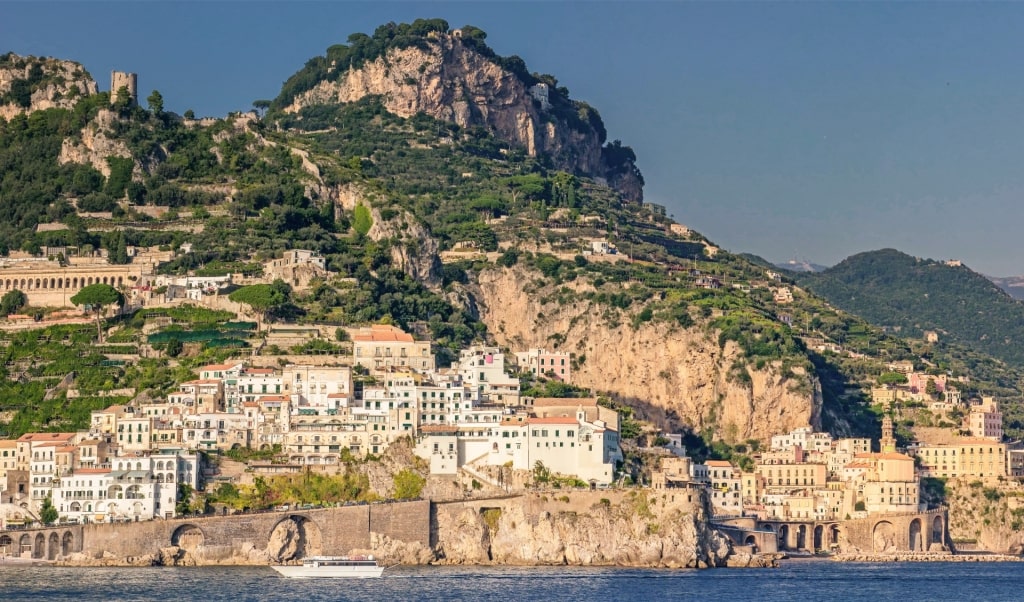
Amalfi Coast
One of the most beautiful sights in the world, the Amalfi Coast is also one of the world’s best drives. For 30 miles, the road follows steep cliffs past pretty villages, vineyards, and lemon groves.
as the “Path of the Gods” for its beauty and high views, making it one of the most scenic things to do in Italy. The smell of wild herbs and the sight of the intense blue Mediterranean are only two of its sensory charms.
In coastal Italian towns such as Amalfi and Positano, you’ll find some of the best food and shopping in Italy. Sprawling down to the sea with colorful houses, their centers are impossibly picturesque.
Su Nuraxi, Sardinia
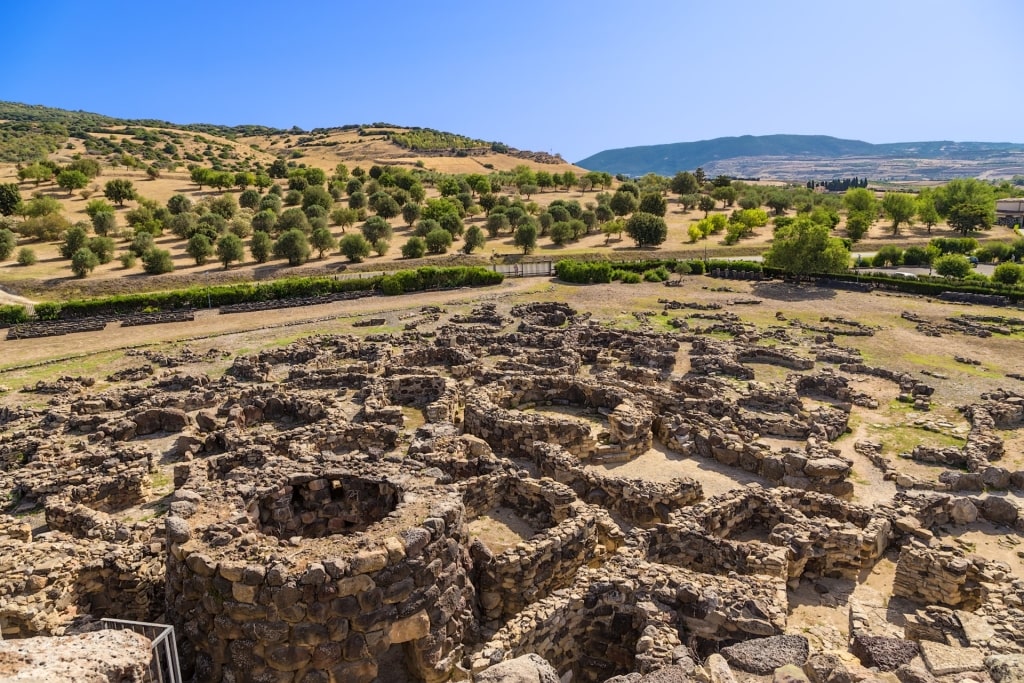
Su Nuraxi, Sardinia
Su Nuraxi is a Bronze Age archaeological site near Barumini in Sardinia. At its heart is a massive basalt bastion, called a nuraghe, that dates to around the 15th century BCE.
The site also has the remains of a village with many circular stone huts and a sewage system. It was built by a mysterious civilization that flourished on Sardinia from 1800 BCE to 200 BCE.
Unesco has recognized Su Nuraxi as the most complete example of that lost civilization. Some 7,000 other nuraghi remain across the island, the only place they have been found.
Mount Etna, Sicily
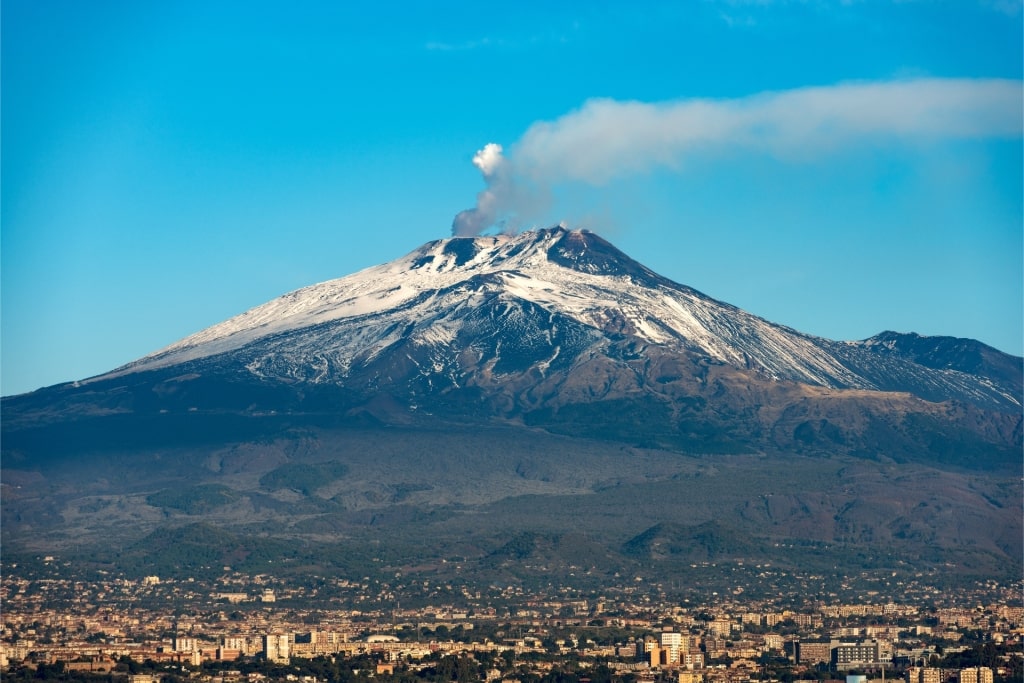
Mount Etna, Sicily
Etna, Europe’s tallest active volcano, is 10,900 feet high. Still very active, its upper slopes are covered in craters, lava fields, and intricate cave systems.
Lower down, the rich volcanic soil supports oak, pine, and beech forests. Beyond them spread vineyards that produce some of the best wines in Sicily.
Hiking to the summit is an all-day affair, so a 4×4 tour is a better option. You can also take a cable car up to walk around the Silvestri Craters.
Duomo, Florence
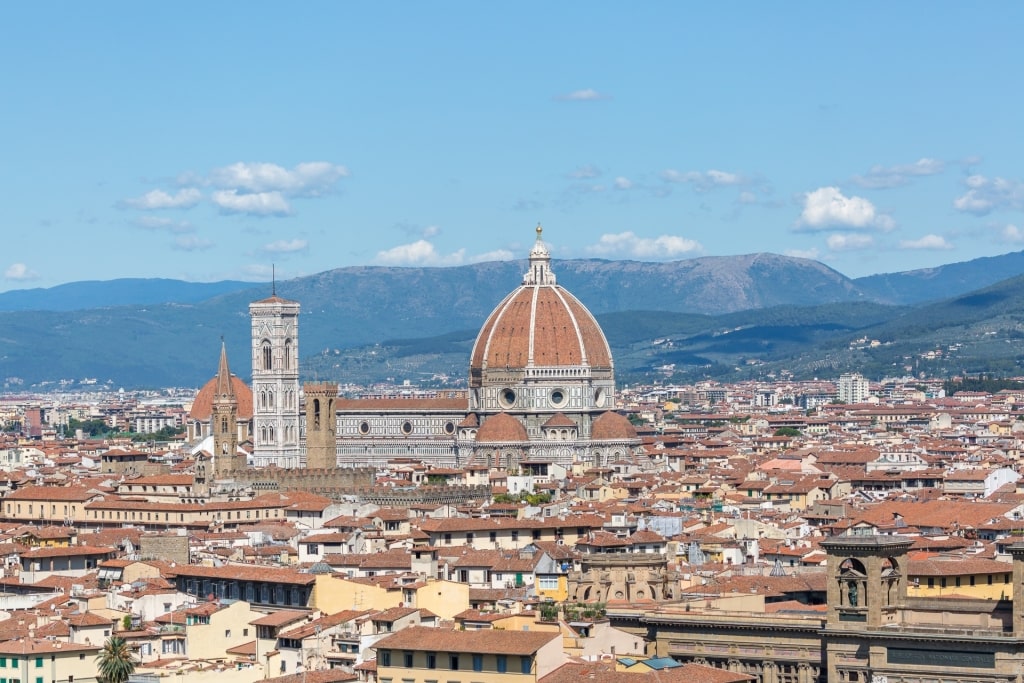
Duomo, Florence
The red-tiled dome of Florence’s cathedral is a heart-stopping sight when you first see it. Towering over the center of this beautiful Italian city, it is the largest masonry dome ever built.
Santa Maria del Fiore—“Saint Mary of the Flower”—is also one of the world’s largest churches, started in 1296. The building work was finished only in 1436.
Michelangelo’s famous statue of David was designed for the Duomo’s roof but was too heavy to place there. The Renaissance artworks that remain, the 44 stained glass windows, and bronze doors are all remarkable.
Leaning Tower, Pisa
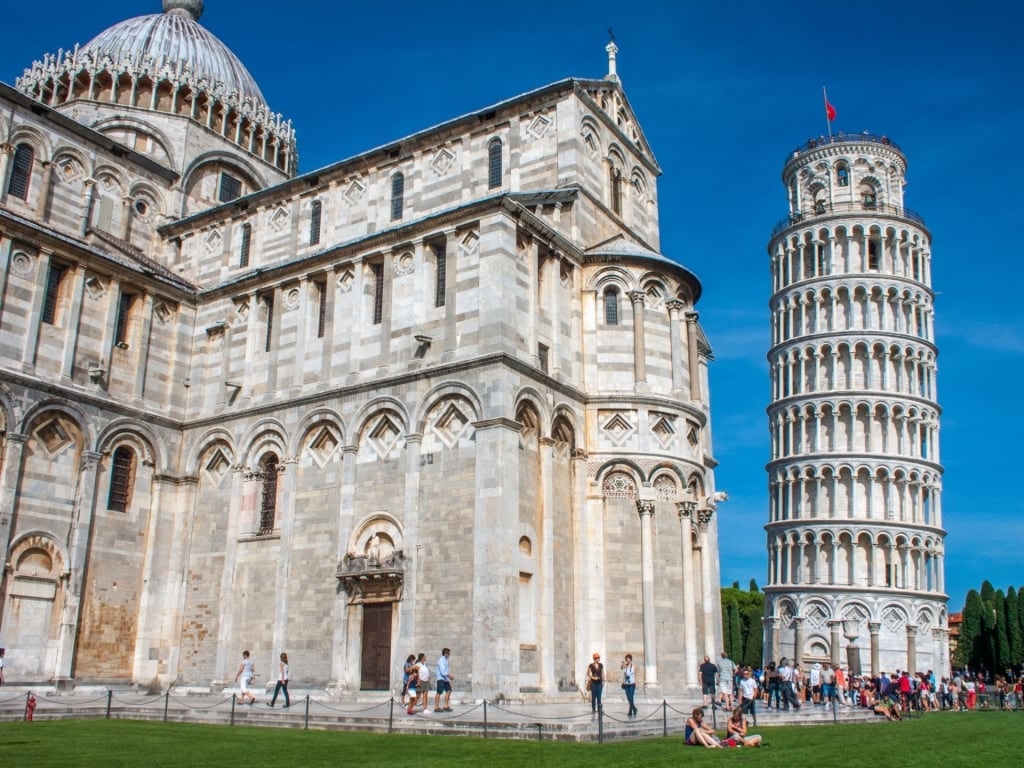
Leaning Tower, Pisa
Perhaps the most famous landmark in Italy, the Leaning Tower of Pisa was built as a bell tower for the city’s cathedral. It was started in 1174 but unstable ground saw it begin to lean almost immediately.
With delays to try and find a solution, the tower was finally finished nearly 200 years later. Some 200 feet high, it leans about 15 feet from the vertical.
The tower is the tallest building on the Piazza dei Miracoli—”Place of Miracles”. With the Santa Maria Assunta cathedral, baptistry, and Camposanto Monumentale cemetery, the complex has been listed by Unesco.
Cinque Terre, Liguria
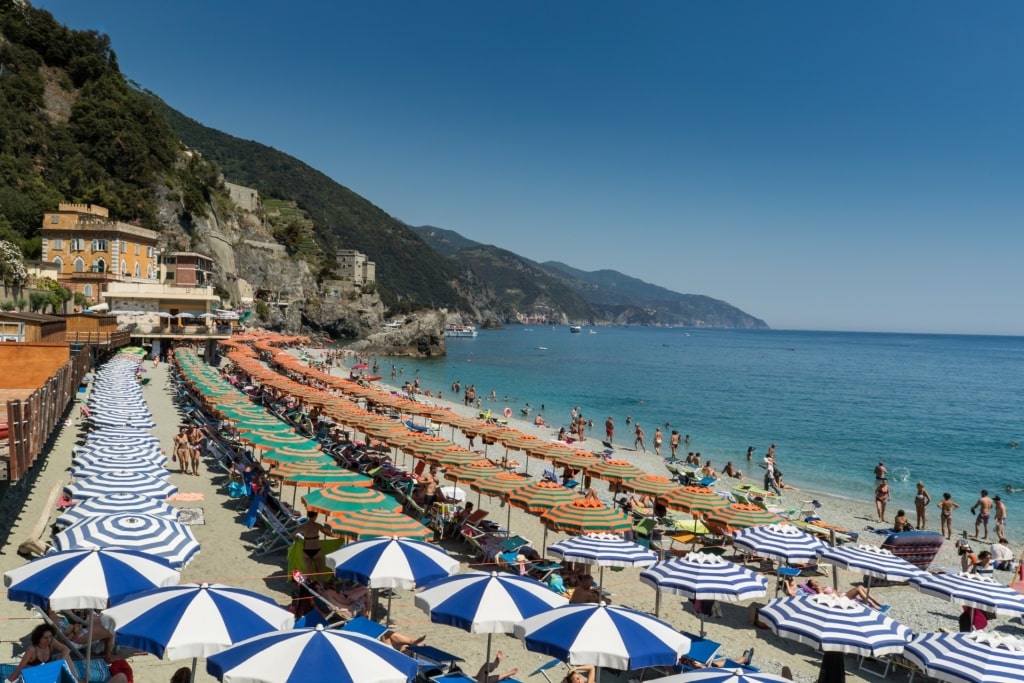
Cinque Terre, Liguria
Cinque Terre is a picturesque area on the coast of Liguria in northwest Italy. Meaning “Five Lands”, it is made up of five colorful fishing villages: Monterosso al Mare, Vernazza, Corniglia, Manarola, and Riomaggiore.
Built on rugged cliffs overlooking the Mediterranean, the villages are connected mainly by boats and hiking paths. You can also take a local train, running through tunnels that connect each place.
The area is a photographer’s delight, with terraced vineyards, olive groves, and scenic harbors. Many of the pastel-colored buildings in Cinque Terre’s towns are now restaurants specializing in the local wine and seafood.
Pompeii, Naples
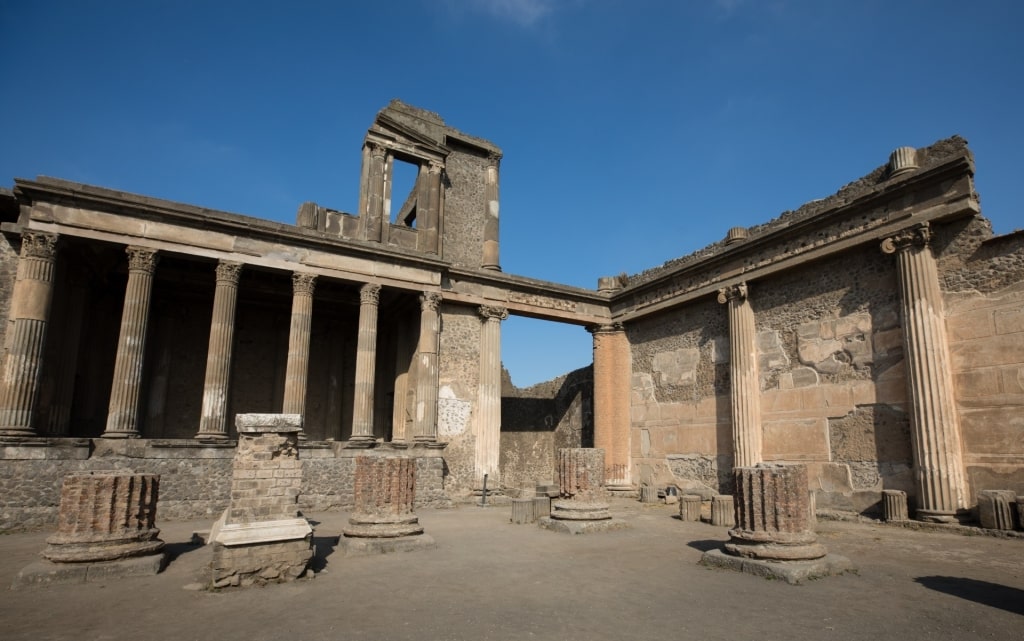
Pompeii, Naples
Pompeii was famously buried in ash by the eruption of Mount Vesuvius in 79 CE. That tragedy preserved the city as a fascinating time capsule of Ancient Roman life.
You can walk on roads rutted by chariots to see homes, businesses, and public buildings. There are even poignant casts of those who didn’t escape in time.
The awesome frescoes in the Village of Mysteries is one popular highlight in Pompeii. You might also enjoy the amphitheater, baths, and the many beautiful mosaics.
Trevi Fountain, Rome
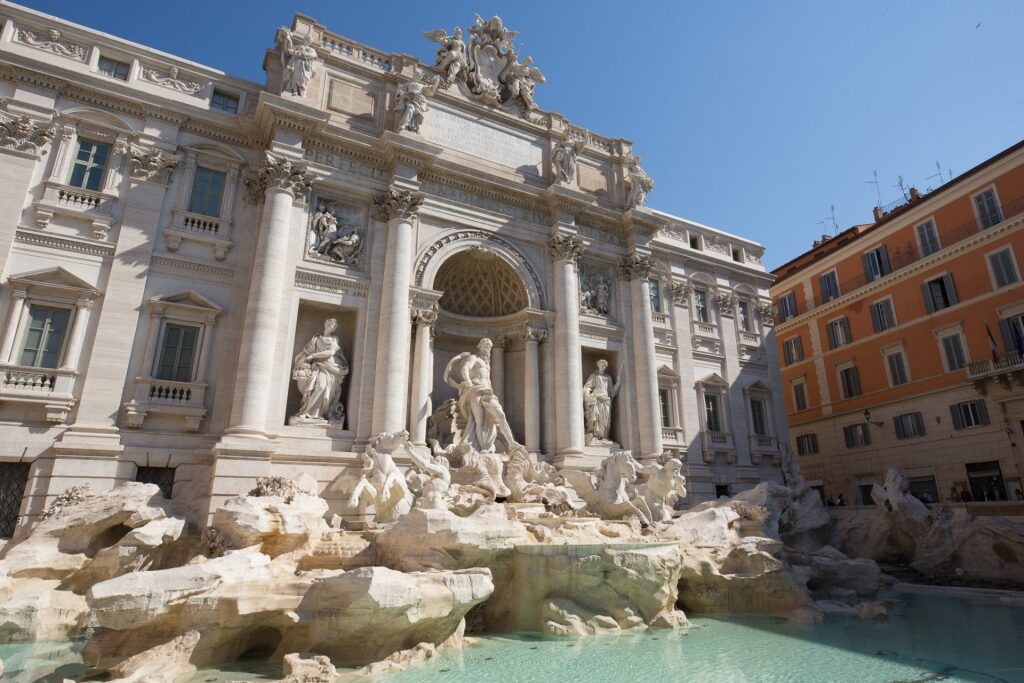
Trevi Fountain, Rome
The Trevi Fountain is the largest Baroque fountain in Rome, and one of Italy’s most famous landmarks. Completed in 1762, it almost fills the tiny Trevi Square with its ambitious scale.
The fountain’s central figure is Neptune, God of the sea, riding a shell-shaped chariot. That’s pulled by two horses, one lively, one calm, symbolising the changeable moods of the sea.
Throwing a coin over your right shoulder into the water is a tradition to bring good luck. More than a million euro in coins is recovered every year and is used to support local charities.
St. Mark’s Basilica, Venice
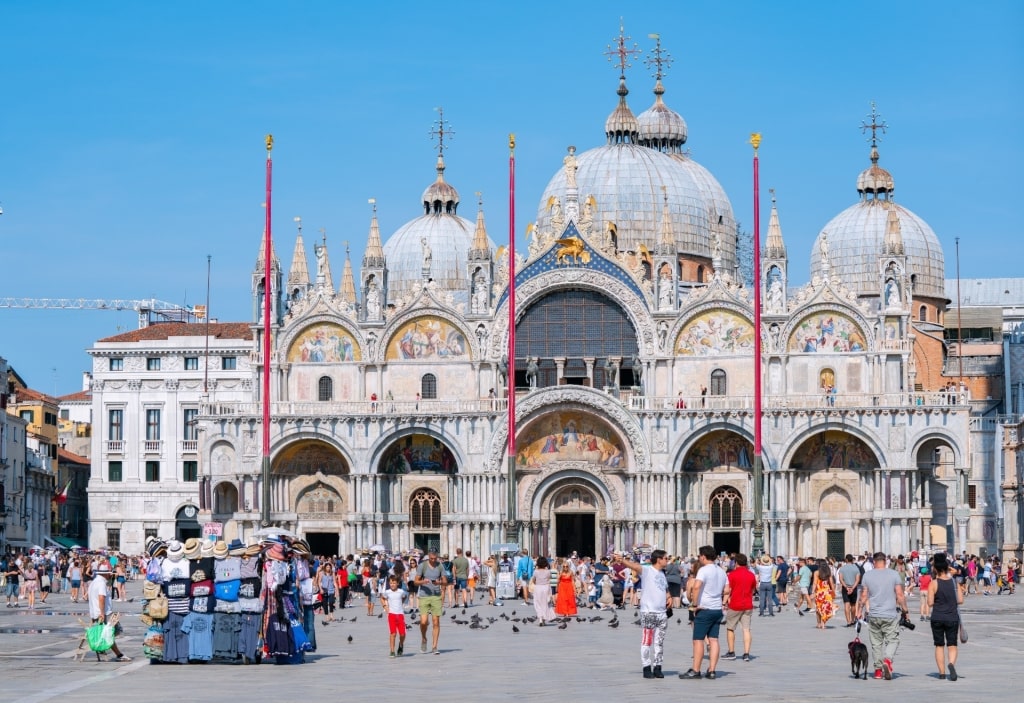
St. Mark’s Basilica, Venice
The ornate facade and golden domes of St. Mark’s dominate the famous piazza in Venice named for the basilica. Inside, the city’s former wealth is shown in a massive expanse of mosaics, gold, and precious stones.
Four bronze horses, taken during the sack of Constantinople in 1204, are a highlight of the museum. Its viewing terrace gives a birds-eye view of life on Piazza San Marco.
The Basilica was built in 1094 to hold the remains of evangelist St. Mark, the city’s patron saint. They had made Venice a major centre of pilgrimage and his winged lion emblem is still a symbol of the city.
Uffizi Gallery, Florence
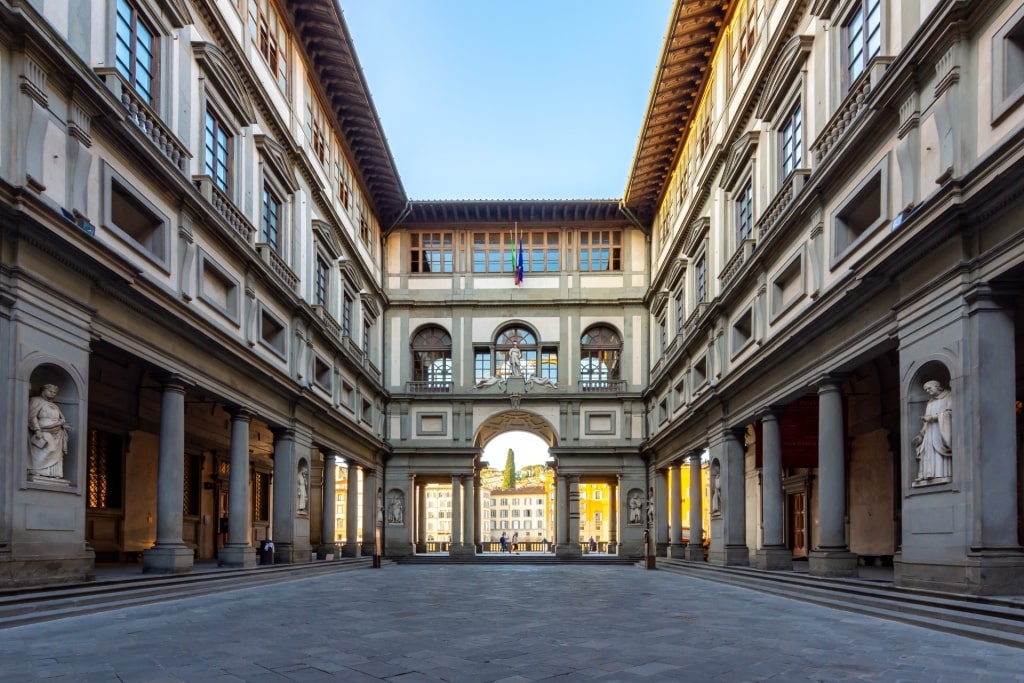
Uffizi Gallery, Florence
The Uffizi is one of Italy’s most important art museums. It houses major works by Renaissance masters such as Botticelli, Michelangelo, Leonardo, Raphael, and many others.
Highlights include Botticelli’s Birth of Venus, Fra Angelico’s Coronation of the Virgin, and Medusa by Caravaggio. Baccio Bandinelli’s sculpture of Laocoön and his Sons is another notable piece you’ll want to see.
The beautiful building was originally designed as offices—“uffizi” in Italian—for Florence’s magistrates. It originally held only a private gallery for the collection of the powerful Medici family.
Castel dell’Ovo, Naples
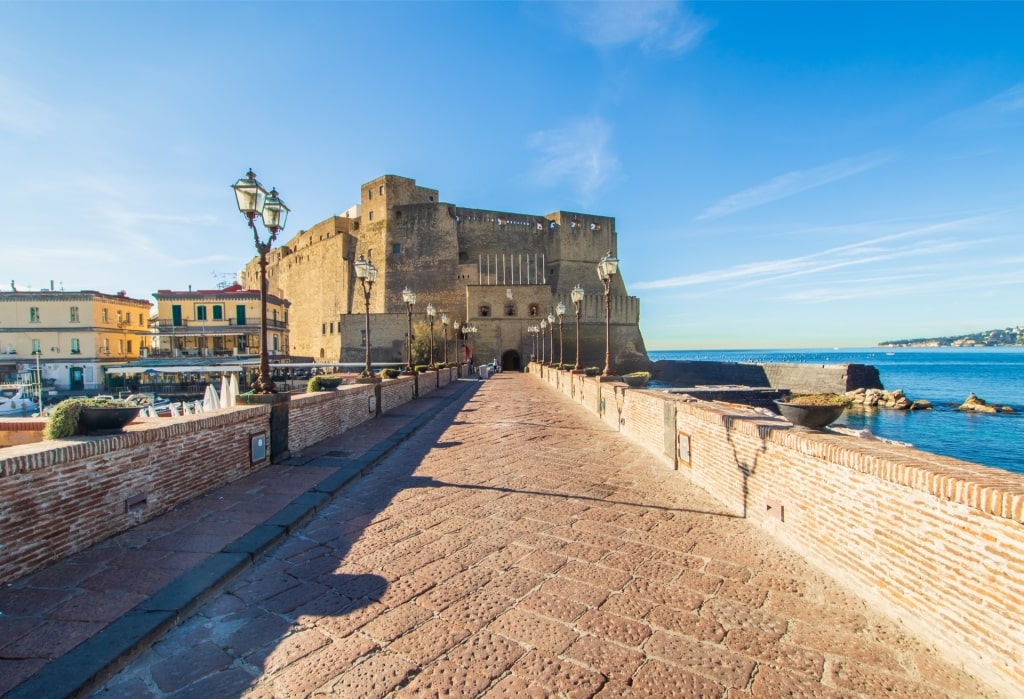
Castel dell’Ovo, Naples
The intimidating waterfront “Castle of the Egg” is one of the most iconic landmarks of Naples. Sitting on the former island of Megaride, now part of the mainland, it was built in the 12th century.
The castle’s name is said to come from a magical egg buried in its walls by the Roman poet Virgil. Legend says that Naples will always be safe from danger if the egg remains intact.
Climb the ramparts to take in the lovely view of the Santa Lucia neighborhood and the lungomare, or seafront promenade. You can also see the Bay of Naples and in the distance, brooding Mount Vesuvius.
Grand Canal, Venice
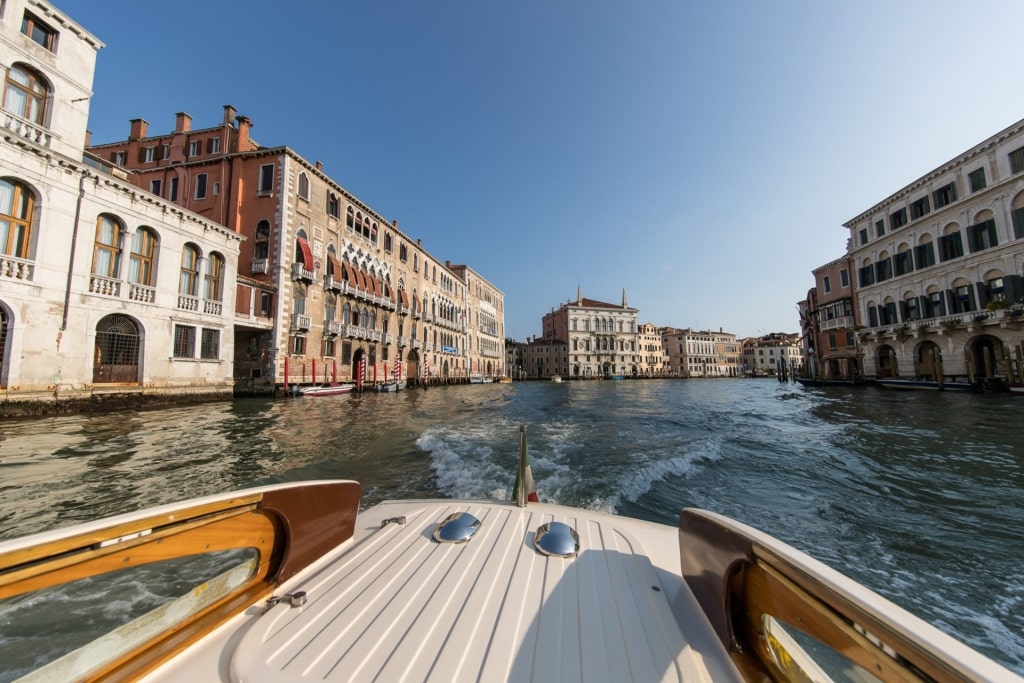
Grand Canal, Venice
While Venice is known for its many man-made canals, the Grand Canal itself was originally a river. That explains the lazy reversed S-shape it traces through the center of the city.
Another distinction is that all its 170 buildings face the water. Dating from the 13th to 18th centuries, they are a showcase of elegant Venetian Gothic, Renaissance, and Baroque architecture.
Major sights include the Rialto Bridge, several majestic palaces and churches, and the Santa Lucia Railway Station. Always busy with gondolas and vaporetto water buses, the canal is the beating heart of Venice.
Colosseum, Rome
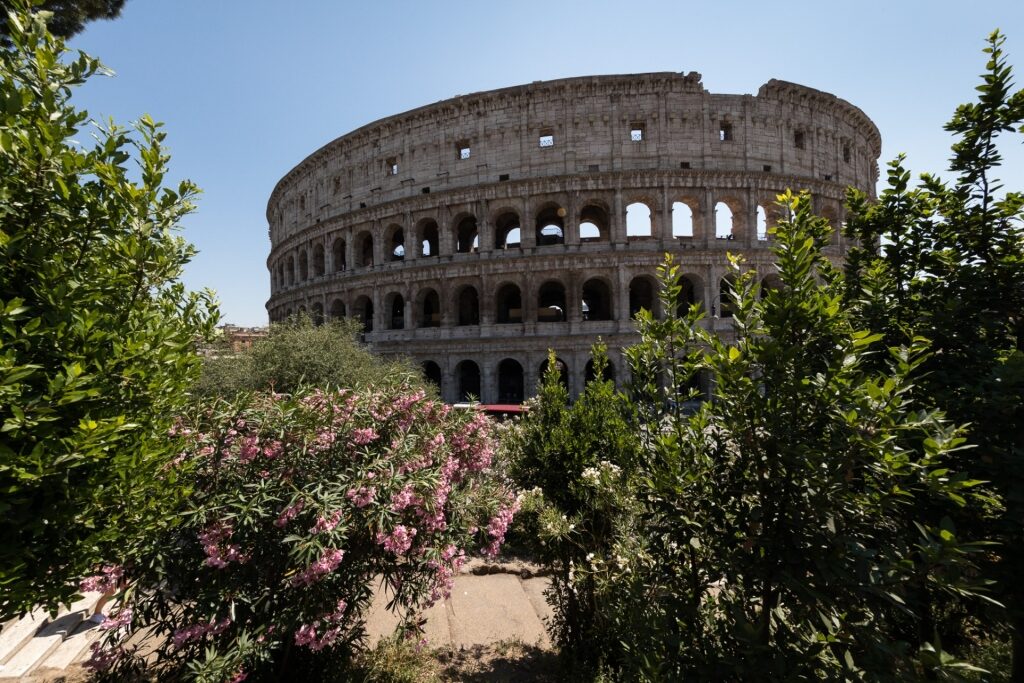
Colosseum, Rome
Completed in 80 CE, the Colosseum was the largest ancient amphitheater ever built. One of the best historical places to visit, it vividly symbolized the might and power of Imperial Rome, holding up to 80,000 spectators.
Infamous for its gladiatorial contests and slaughter of rare animals, the Roman landmark is now a more peaceful sight. With millions of visitors a year, it is Italy’s most popular attraction.
A guided tour will let you see the vast underground Hypogeum where gladiators, animals, and prisoners were held before entering the arena. A network of shafts and elaborate trap doors allowed scenery to be set up quickly.
Ostuni, Brindisi
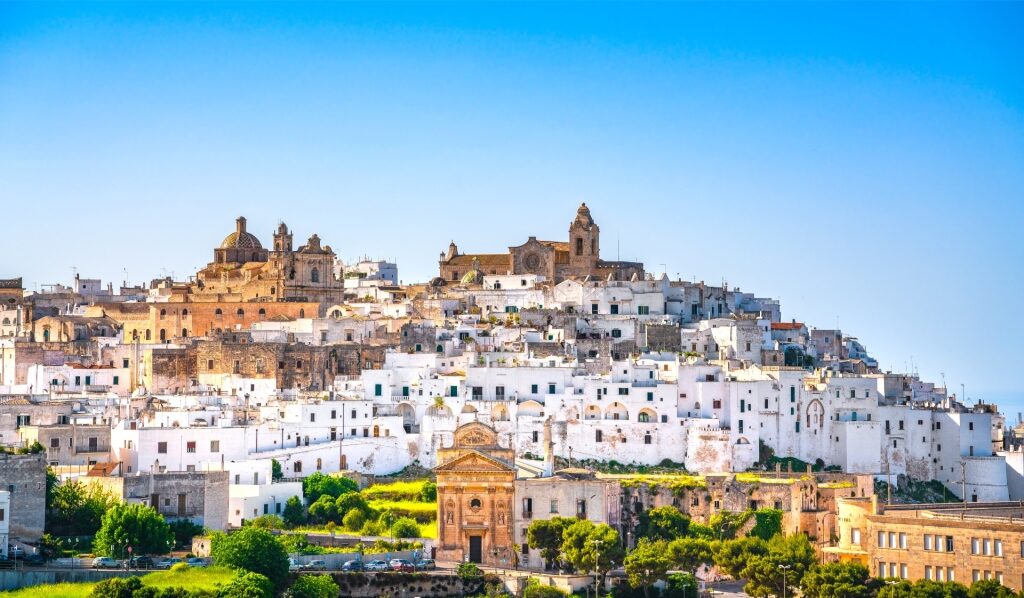
Ostuni
Ostuni is a hilltop town in Puglia, famous for its whitewashed buildings cascading down three hills. Known as La Città Bianca, or “White City”, it is a maze of cobblestone streets, steps, and hidden squares.
The town is enclosed by medieval walls, from which you have great views of the Adriatic. The blue sea, surrounding green olive groves, and white walls form a picturesque combination.
Major sights include the 15th-century Gothic cathedral and Bishop’s Palace. However, local specialities such as caciocavallo and stracciatella cheeses are also a delight.
Basilica of San Vitale, Ravenna
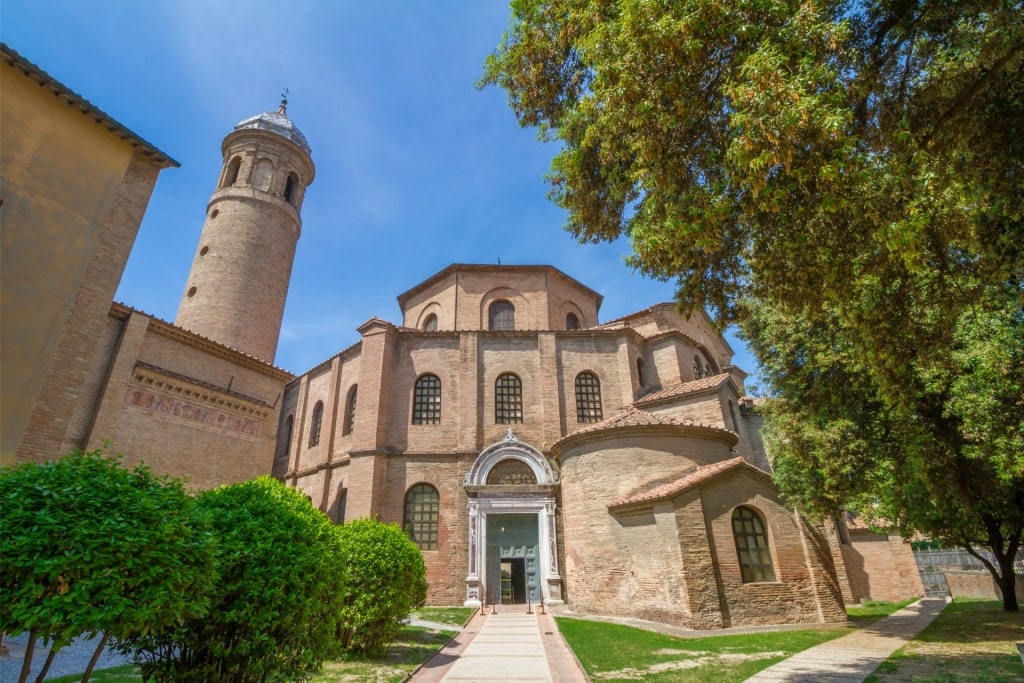
Basilica of San Vitale, Ravenna
Ravenna’s Basilica of San Vitale is one of the most important examples of early Byzantine architecture in western Europe. Hidden inside its rather plain exterior are some of the world’s most glorious Christian mosaics.
The basilica was built in 547 CE and blends Roman with Byzantine architectural elements. The imposing central dome was decorated with frescoes in the 17th century.
Around the church, mosaics show scenes from the Old Testament, including the story of Cain and Abel. The most significant depict Emperor Justinian I—who built Istanbul’s Hagia Sophia—and his wife Theodora.
Pantheon, Rome
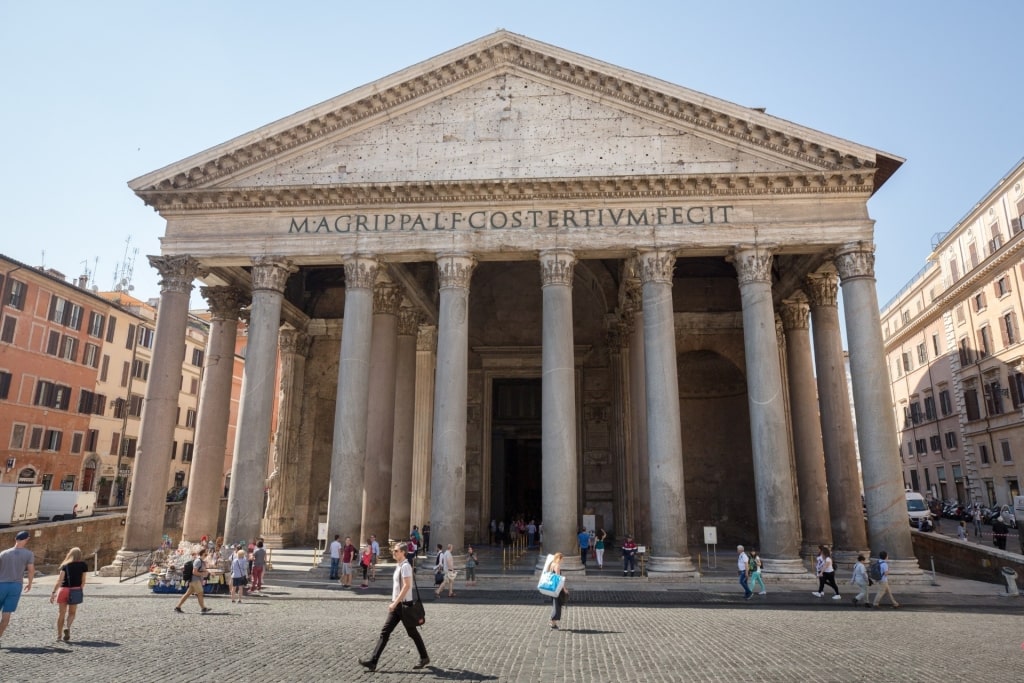
Pantheon, Rome
The Pantheon is topped by what is still the world’s largest unreinforced concrete dome. It’s hard to imagine how impressive that must have been when this “temple of all the gods” was finished around 126 CE.
Its influence can be seen around the world in buildings such as the US Capitol and the British Museum in London. Its perfect proportion means a sphere 142 feet in diameter would fit perfectly inside.
The only light for that vast interior is from the oculus, a 19-foot-wide opening in the dome. You’ll note how the marble floor curves to drain off any rainwater that might enter through it.
Read: Best Places to Visit in Italy for the First Time
St. Peter’s Basilica, Vatican City

St. Peter’s Basilica, Vatican City
St .Peter’s is the world’s largest church and the global center of Roman Catholicism. The second church on this site, it was first consecrated in 1626.
The first basilica was built in the mid-fourth century, after the Roman Emperor ended centuries of Christian persecution. It’s thought to stand on the bones of St. Peter, the apostle and first pope.
Works of art inside include Michelangelo’s Pietà, the only work he ever signed. Don’t miss the breathtaking view from the cupola, the highest viewpoint in Rome.
Doge’s Palace, Venice
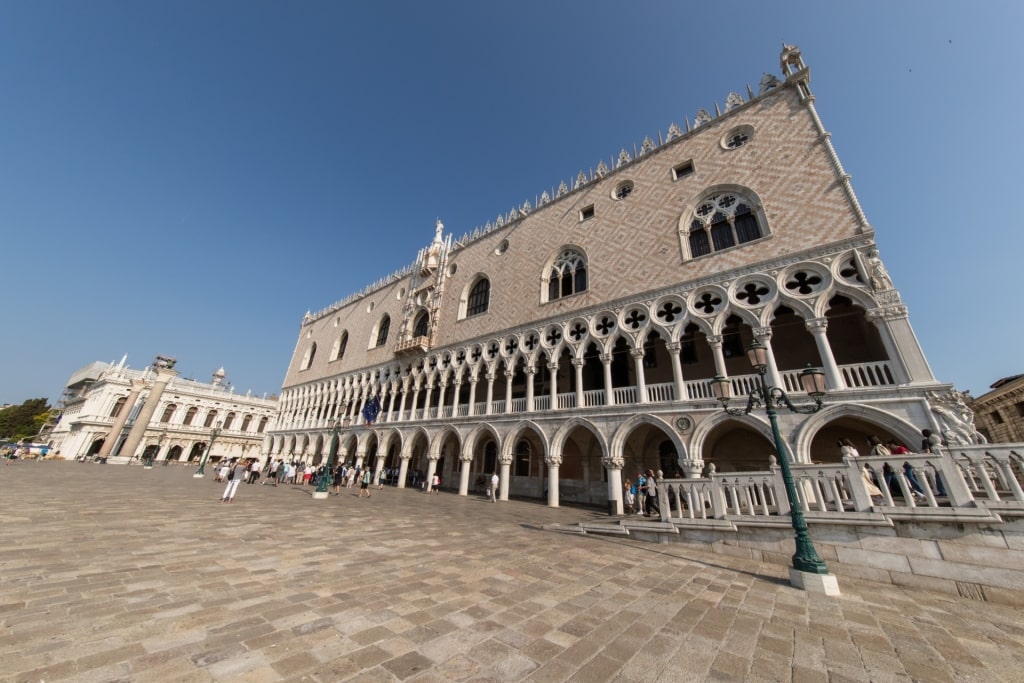
Doge’s Palace, Venice
The Palazzo Ducale is a masterpiece of Venetian Gothic architecture on St. Mark’s Square. Now a museum, it was once the residence of the Doge, the leader of the former Venetian Republic.
The republic fell in 1797 but, until then, the palace was central to the running of one of the world’s wealthiest city states. Its white limestone facade and run of Gothic arches was designed to impress—and still does.
Inside, it is even more lavish, with its Great Council Hall displaying Tintoretto’s massive Paradise painting. A highlight of any tour is the infamous Bridge of Sighs, from where condemned prisoners had their last sight of Venice.
Portofino, Liguria

Portofino, Liguria
Portofino is such a perfect vision of beauty that it can seem like a movie set. Pastel-colored buildings backed by emerald hills line an azure-blue harbor filled with gleaming white yachts.
The best view is from historic Castello Brown, once a Genoese fort, then a home, and now a museum. It’s reached by hiking trails that offer panoramic views themselves.
An alternative is to enjoy a drink or meal in the Piazzetta overlooking the harbor. You’ll see an endless display of style, beauty, and la dolce vita here on the Italian Riviera.

Portofino, Liguria
Are you tempted to discover the bel paese, or beautiful country for yourself? Browse Celebrity’s cruises to Italy to find your dream vacation.
